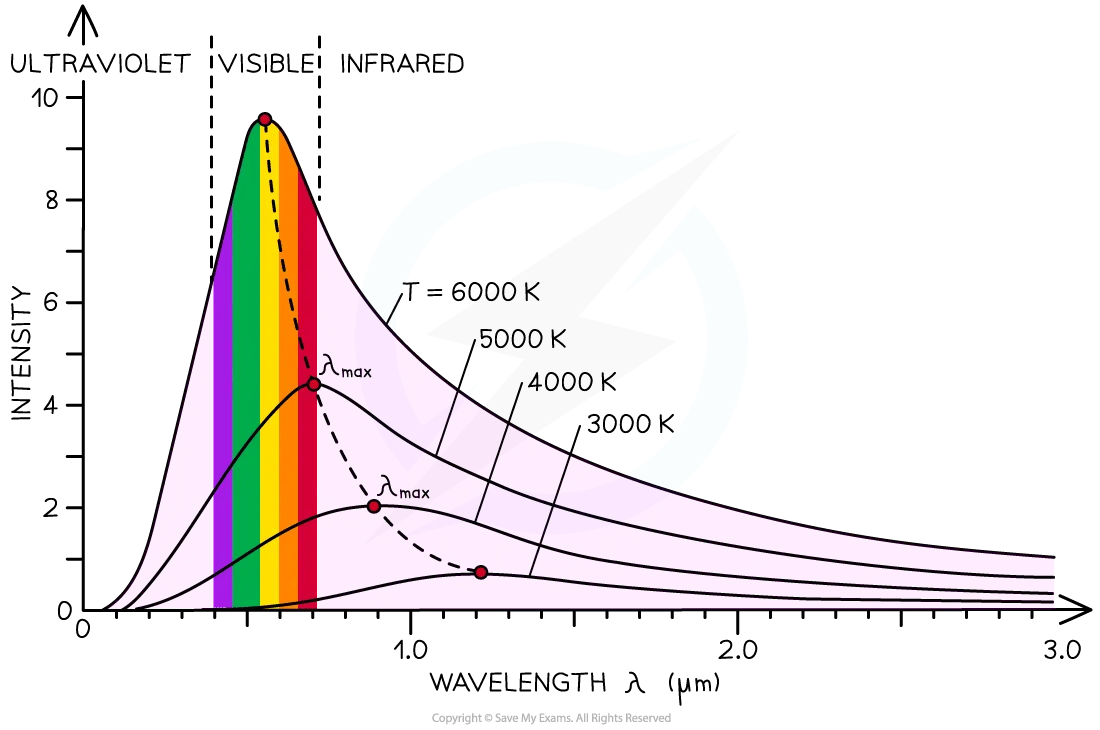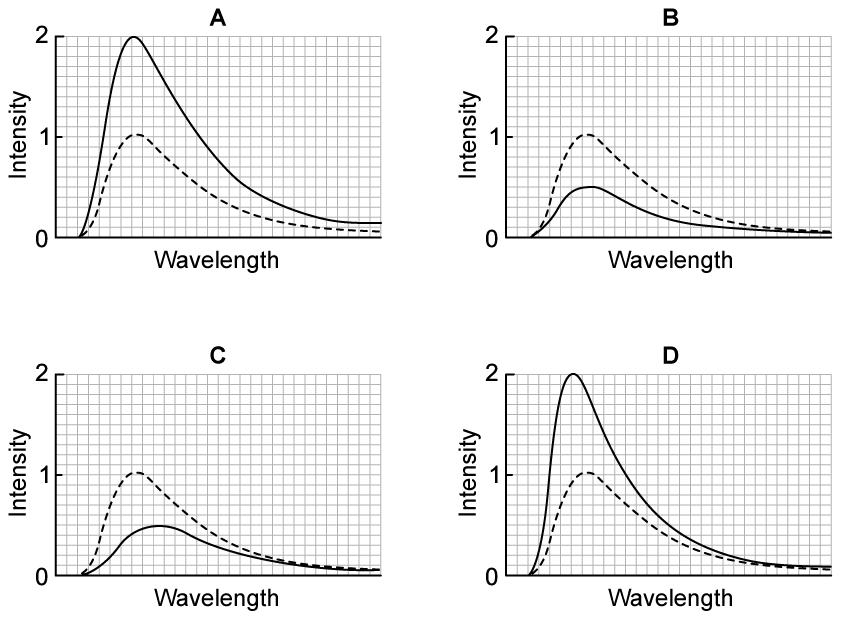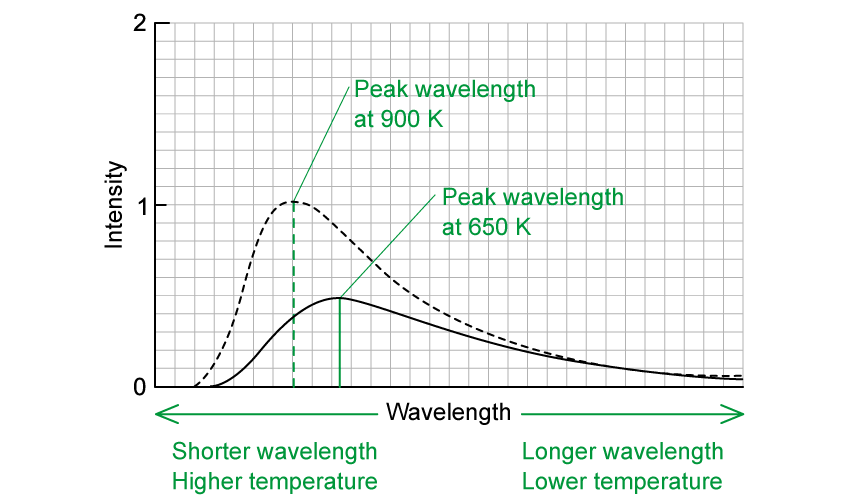Wien’s Displacement Law (DP IB Physics) : Revision Note
Wien’s Displacement Law
Wien’s displacement law relates the observed wavelength of light from an object to its surface temperature, it states:
The black body radiation curve for different temperatures peaks at a wavelength that is inversely proportional to the temperature
This relation can be written as:
Where:
λmax = the wavelength at which radiation is emitted at the greatest intensity (m)
T = the surface temperature of an object (K)
Wien's Displacement Law Graph

The intensity-wavelength graph shows how thermodynamic temperature links to the peak wavelength for four different bodies
Wien's Law equation is given by:
λmaxT = 2.9 × 10−3 m K
This equation shows that the higher the temperature of a body, the shorter the wavelength at the peak intensity
Additionally, as the object gains temperature, the intensity of radiation at every wavelength increases – this can be seen on the graph above
Consider an object being heated from room temperature:
Initially, the object emits radiation with the greatest intensity in the infrared range
As it gains heat, the peak of the curve shifts left to the red region of the visible spectrum (the object glows red)
As it is heated further, the peak shifts left further until it is in the centre of the visible range, (the object glows white, an equal mix of wavelengths in the visible range)
As it heats further still, the object will eventually glow blue and even emit UV radiation
Table to compare surface temperature and star colour
Star Colour | Temperature / K |
|---|---|
blue | >33 000 |
blue-white | 10 000 − 30 000 |
white | 7500 − 10 000 |
yellow-white | 6000 − 7500 |
yellow | 5000 − 6000 |
orange | 3500 − 5000 |
red | <3500 |
Worked Example
The black-body radiation curve of an object at 900 K is shown in the diagram below.

Which of the following shows the black-body radiation curve of an object at 650 K?
The dashed line represents the curve of the object at 900 K.

Answer: C
From Wien's displacement law:
Therefore, a curve with a longer peak wavelength will correspond to a lower temperature

Worked Example
The spectrum of the star Rigel in the constellation of Orion peaks at a wavelength of 263 nm, while the spectrum of the star Betelgeuse peaks at a wavelength of 828 nm.
Determine which of these two stars, Betelgeuse or Rigel, is cooler.
Answer:
Step 1: List the known quantities
Maximum emission wavelength of Rigel = 263 nm = 263 × 10−9 m
Maximum emission wavelength of Betelgeuse = 828 × 10−9 m
Step 2: Write down Wien’s displacement law and rearrange for temperature T
Step 3: Calculate the surface temperature of each star
Rigel:
Betelgeuse:
Step 4: Write a concluding sentence
Betelgeuse has a surface temperature of 3500 K, therefore, it is much cooler than Rigel
Wien's law and stars in the Orion constellation

The Orion Constellation; cooler stars, such as Betelgeuse, appear red or yellow, while hotter stars, such as Rigel, appear white or blue
Examiner Tips and Tricks
Note that the temperature used in Wien’s Law is in Kelvin (K). Remember to convert from oC if the temperature is given in degrees in the question before using the Wien’s Law equation.

You've read 0 of your 5 free revision notes this week
Sign up now. It’s free!
Did this page help you?
